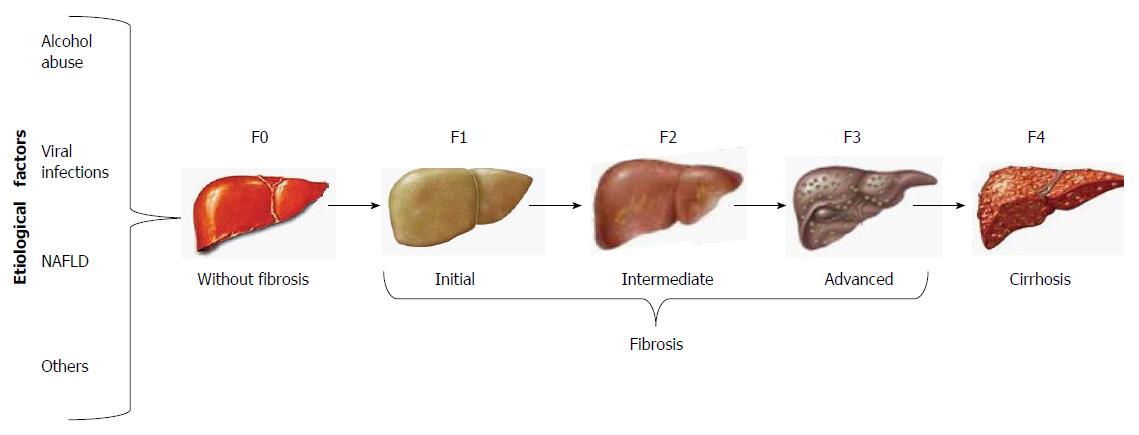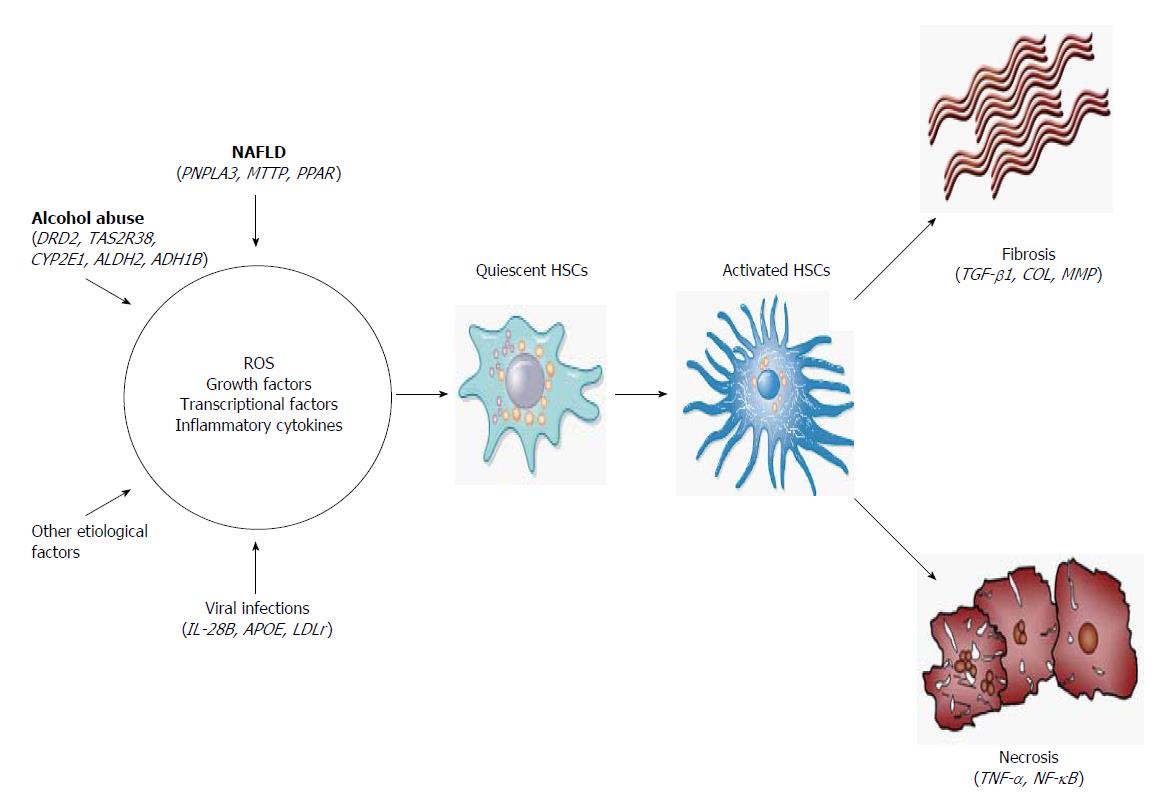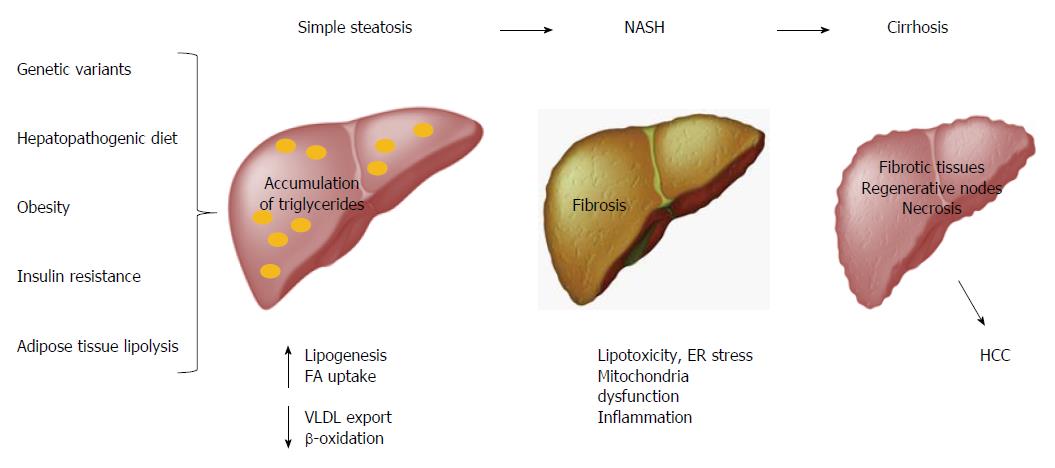Copyright
©The Author(s) 2015.
World J Gastroenterol. Nov 7, 2015; 21(41): 11552-11566
Published online Nov 7, 2015. doi: 10.3748/wjg.v21.i41.11552
Published online Nov 7, 2015. doi: 10.3748/wjg.v21.i41.11552
Figure 1 Stages of liver fibrosis.
Liver fibrosis may be evaluated by liver biopsy and non-invasive methods. Regardless of etiological factors, liver fibrosis encompasses 3 stages until the development of cirrhosis. NAFLD: Nonalcoholic fatty liver disease.
Figure 2 Hepatic fibrogenesis.
Different etiological factors induce production of several stimuli to HSCs activation. Activated HSCs promote fibrosis and necrosis of hepatocytes. These pathogenic processes can be modulated by genetic polymorphisms involved in each stage of the pathophysiological process. HSC: Hepatic stellate cells; DRD2: Dopamine receptor D2; TAS2R38: Bitter taste receptor; CYP2E1: Cytochrome P450, family 2, subfamily E, polypeptide 1; ALDH2: Aldehyde dehydrogenase 2 family; ADH1B: Alcohol dehydrogenase class I, beta polypeptide; PNPLA3: Patatin-like phospholipase 3; MTTP: Microsome triglyceride transfer protein; PPAR-γ2: Peroxisome proliferator-activated receptors; IL-28B: Interleukin-28B; APOE: Apolipoprotein E; LDLr: Low-density lipoprotein receptor; TGF-β1: transforming growth factor beta 1; COL: Collagenases; MMP: Matrix metalloproteinase; TNF-α: Tumor necrosis factor alpha; NF-κB: Nuclear factor kappa B; ROS: Reactive oxygen species.
Figure 3 Nonalcoholic fatty liver disease pathogenesis.
The spectrum of NAFLD includes simple steatosis, NASH, LC and even HCC. Risk factors such as obesity, hepatopathogenic diet, insulin resistance and adipose tissue lipolysis lead to accumulation of triglycerides. This abnormality can stimulate lipotoxicity, ER stress, mitochondria dysfunction and inflammation, promoting fibrosis. Chronic fibrogenesis causes histological changes in the liver that lead to LC, which in turn may evolve to HCC. NAFLD: Nonalcoholic fatty liver disease; NASH: Nonalcoholic steatohepatitis; LC: Liver cirrhosis; HCC: Hepatocellular carcinoma; FA: Fatty acids; VLDL: Very low-density lipoprotein; ER: Endoplasmic reticulum.
- Citation: Ramos-Lopez O, Martinez-Lopez E, Roman S, Fierro NA, Panduro A. Genetic, metabolic and environmental factors involved in the development of liver cirrhosis in Mexico. World J Gastroenterol 2015; 21(41): 11552-11566
- URL: https://www.wjgnet.com/1007-9327/full/v21/i41/11552.htm
- DOI: https://dx.doi.org/10.3748/wjg.v21.i41.11552











